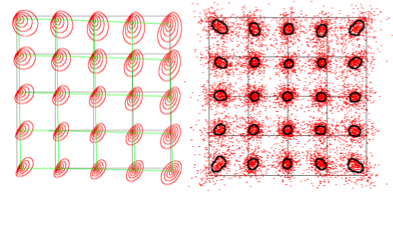IMAGE: Combined Effects of Aberrations and Coulomb Interactions
The Image software package computes effects of aberrations and discrete Coulomb interactions in electron and ion beams, in a unified way, by direct ray-tracing. The software is applicable to a very wide range of systems, including combinations of round lenses, deflectors and stigmators, multipole systems, cathode imaging systems and electron mirrors. Accurate direct ray tracing eliminates the need to use conventional aberration theory, and the method is therefore applicable to systems with aberrations of any order. The software handles fields with an arbitrary combination of multipole components, and can compute the effects of asymmetry errors, for use in tolerancing calculations. Post-processing facilities are included, for plotting point spread functions (with systematic or random initial conditions) and through-focal series of edge blur diagrams.

The paths of electrons or ions are traced through these analytic fields by direct ray-tracing, using a fifth-order Runge-Kutta formula, with adaptive step size for automatic error control. This ray-trace algorithm typically gives an accuracy of better than 1 picometer over a column length of 1 meter.
In the ray tracing, a whole ensemble of particles can be traced down the column simultaneously. This makes it possible to include the Coulomb fields between the N particles in the ensemble, on each time step. A subset of the IMAGE software can be supplied, which allows the analysis of the combined effects of aberrations and Coulomb interactions, in imaging systems containing lenses only.
If you are interested in the IMAGE package, please contact us at info@electronoptica.com.

